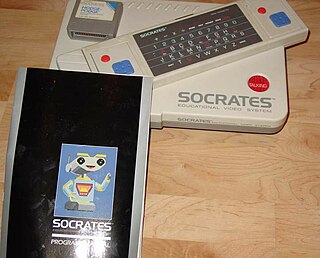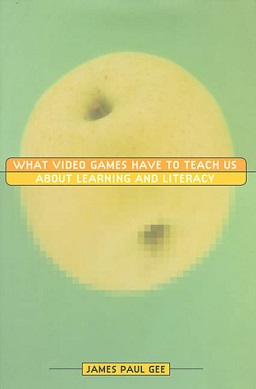
An idiom dictionary is a dictionary or phrase book that lists and explains idioms – distinctive words or phrases having a figurative meaning that goes beyond the original semantics of the words.
Educational games are games explicitly designed with educational purposes, or which have incidental or secondary educational value. All types of games may be used in an educational environment, however educational games are games that are designed to help people learn about certain subjects, expand concepts, reinforce development, understand a historical event or culture, or assist them in learning a skill as they play. Game types include board, card, and video games.

A string figure is a design formed by manipulating string on, around, and using one's fingers or sometimes between the fingers of multiple people. String figures may also involve the use of the mouth, wrist, and feet. They may consist of singular images or be created and altered as a game, known as a string game, or as part of a story involving various figures made in sequence. String figures have also been used for divination, such as to predict the sex of an unborn child.

ClueFinders is an educational software series aimed at children aged 8–12 that features a group of mystery-solving teenagers. The series was created by The Learning Company as a counterpart to their Reader Rabbit series for older, elementary-aged students. The series has received praise for its balance of education and entertainment, resulting in numerous awards.
Kinesthetic learning, kinaesthetic learning, or tactile learning is learning that involves physical activity. As cited by Favre (2009), Dunn and Dunn define kinesthetic learners as students who prefer whole-body movement to process new and difficult information. However, scientific studies do not support the claim that using kinesthetic modality improves learning in students identified as kinesthetic learning as their preferred learning style.
The American Manual Alphabet (AMA) is a manual alphabet that augments the vocabulary of American Sign Language.

Cecil Randolph Hundley Jr. is an American former professional baseball player and coach. He played in Major League Baseball as a catcher for the San Francisco Giants, Chicago Cubs, Minnesota Twins, and the San Diego Padres. Hundley played the majority of his career with the Cubs and was considered their leader in the late 1960s and early 1970s. Despite being a light-hitter, Hundley was regarded as one of the best defensive catchers of his era, and the best Cubs catcher since Gabby Hartnett in 1940.
In music, fingering, or on stringed instruments sometimes also called stopping, is the choice of which fingers and hand positions to use when playing certain musical instruments. Fingering typically changes throughout a piece; the challenge of choosing good fingering for a piece is to make the hand movements as comfortable as possible without changing hand position too often. A fingering can be the result of the working process of the composer, who puts it into the manuscript, an editor, who adds it into the printed score, or the performer, who puts his or her own fingering in the score or in performance.
Fingering...also stopping...(1) A system of symbols for the fingers of the hand used to associate specific notes with specific fingers....(2)Control of finger movements and position to achieve physiological efficiency, acoustical accuracy [frequency and amplitude] and musical articulation.

An educational video game is a video game that provides learning or training value to the player. Edutainment describes an intentional merger of video games and educational software into a single product. In the narrower sense used here, the term describes educational software which is primarily about entertainment, but tends to educate as well and sells itself partly under the educational umbrella. Normally software of this kind is not structured towards school curricula and does not involve educational advisors.
The learning center strategy uses eight basic learning centers to address the countless objectives of American early childhood classrooms, attempting to develop the student’s social, emotional, physical, cognitive, and aesthetic abilities.
A serious game or applied game is a game designed for a primary purpose other than pure entertainment. The "serious" adjective is generally prepended to refer to video games used by industries like defense, education, scientific exploration, health care, emergency management, city planning, engineering, politics and art. Serious games are a subgenre of serious storytelling, where storytelling is applied "outside the context of entertainment, where the narration progresses as a sequence of patterns impressive in quality ... and is part of a thoughtful progress". The idea shares aspects with simulation generally, including flight simulation and medical simulation, but explicitly emphasizes the added pedagogical value of fun and competition.

James Gee is a retired American researcher who has worked in psycholinguistics, discourse analysis, sociolinguistics, bilingual education, and literacy. Gee most recently held the position as the Mary Lou Fulton Presidential Professor of Literacy Studies at Arizona State University, originally appointed there in the Mary Lou Fulton Institute and Graduate School of Education. Gee has previously been a faculty affiliate of the Games, Learning, and Society group at the University of Wisconsin–Madison and is a member of the National Academy of Education.
Johnny Whoop, also known as Johnny, Johnny, is a children's hand game. One person holds out one of their hands and touches each finger with the index finger from the other hand, going from the pinky to the index finger, then slides the other hand's index finger down between the index finger and the thumb, then touches the thumb, and then repeats the sequence in reverse. As the person touches each finger and the thumb, the person says "Johnny"; as the person slides the finger toward and back from the thumb, they say "Whoop". The result is the sequence "Johnny, Johnny, Johnny, Johnny, Whoop, Johnny, Whoop, Johnny, Johnny, Johnny, Johnny." People in the surrounding group are then challenged to repeat the sequence precisely.

Yasmin B. Kafai is a German American academic who is Professor of Learning Sciences at the University of Pennsylvania Graduate School of Education, with a secondary appointment in Computer and Information Sciences at University of Pennsylvania School of Engineering and Applied Science. She is a past president of the International Society of the Learning Sciences (ISLS), and an executive editor of the Journal of the Learning Sciences.

A thumb war or thumb fight is a game played by two players in which the thumbs are used to simulate fighting. The objective of the game is to "pin" the opponent's thumb, often to a count of ten. The San Francisco Chronicle called the game "the miniature golf of martial sports."
Emergent literacy is a term that is used to explain a child's knowledge of reading and writing skills before they learn how to read and write words. It signals a belief that, in literate society, young children—even one- and two-year-olds—are in the process of becoming literate. Through the support of parents, caregivers, and educators, a child can successfully progress from emergent to conventional reading.

The gamification of learning is an educational approach that seeks to motivate students by using video game design and game elements in learning environments. The goal is to maximize enjoyment and engagement by capturing the interest of learners and inspiring them to continue learning. Gamification, broadly defined, is the process of defining the elements which comprise games, make those games fun, and motivate players to continue playing, then using those same elements in a non-game context to influence behavior. In other words, gamification is the introduction of game elements into a traditionally non-game situation.

What Video Games Have to Teach Us About Learning and Literacy is a book by James Paul Gee that focuses on the learning principles in video games and how these principles can be applied to the K-12 classroom. Video games can be used as tools to challenge players, when they are successful. They motivate players to persevere and simultaneously teach players how to play the game. These games give a glimpse into how one might create new and more powerful ways to learn in schools, communities, and workplaces. Gee began his work in video games by identifying thirty-six learning principles that are present in—but not exclusive to—the design of good video games. He further argues for the application of these principles into the classroom environment. What Video Games Teach Us about Learning and Literacy is a call to educators, teachers, parents and administrators to change the approach to pedagogy.
Anvil Studio is a multitrack MIDI and audio editing, digital audio workstation program that runs on Microsoft Windows. It is developed by Willow Software, based in Shoreline, Washington, U.S.A.
Extramural English(EE) is a term used in the field of second language acquisition and an example of informal learning of English. The term was first coined in 2009 by Pia Sundqvist. It refers to 'English outside the walls' (from Latin extramural, where the prefix, extra, means 'outside' and the stem, mural, means 'wall'). EE is English that learners come in contact with or are involved in outside the walls of the classroom, often through streaming media and online games.










